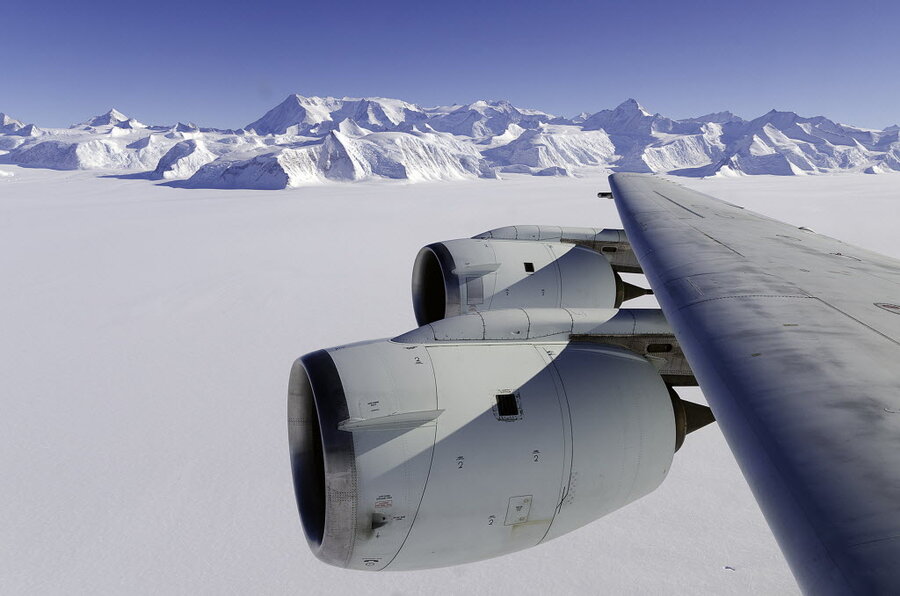Parts of East Antarctic ice sheet have melted before and could again
Loading...
A coastal region of the largest ice sheet in the world melted millions of years ago – and could again.
During the Pliocene epoch some five million to two million years ago, the East Antarctic ice sheet retreated more than a hundred miles, researchers have found. That finding contradicts models showing that the enormous ice sheet has been stable over the last several million years and suggests that future melting from the sheet could contribute to sea level rise if global warming is not abated.
“If carbon dioxide levels and global temperatures continue to rise, the East Antarctic ice sheet may become increasingly vulnerable to large changes, like those that took place during the Pliocene,” said Carys Cook, a research postgraduate from the Grantham Institute for Climate Change at Imperial College London and a co-author on the study, published in Nature Geoscience.
The East Antarctic ice sheet, home to the South Pole, is the largest ice mass on Earth and one of two large sheets blanketing Antarctica. Scientists have generally agreed that the ice sheet’s counterpart, the West Antarctic ice sheet, along with the Greenland ice sheet are rapidly shedding thier mass and contributing to a rise in the average global sea level, which over the past 20 has been rising at a rate of about 0.13 inches a year.
But the East Antarctic ice sheet has been more inscrutable. Studies have disagreed over whether the sheet is currently gaining or losing mass, a disagreement mostly caused by disparities in where the data is collected from the sheet, some parts of which are more vulnerable to melting than others, said Dr. Cook.
And the ice sheet’s past is even more enigmatic than its present. Most models, drawing on global sea level data, have shown that the sheet has been stable over the past 14 million years and is unlikely to exhibit melting in the future.
But now a series of studies, which this latest project bookends, have indicated just the opposite. Using evidence drilled directly from the remote Antarctic ice, scientists have shown that the sheet was in fact dynamic about three million years ago.
"Up to now, most studies looking at the past stability of the East Antarctic ice sheet have been based on indirect records that are from locations really far away from Antarctica, and therefore may not provide as full a picture of what was happening there as records retrieved from right next to the continent,” said Cook.
Researchers studied the geochemical signature of marine sediments drilled from depths about 1.8 miles below sea level off Antarctica’s coast. The sediments were chemically traced back to the Wilkes Subglacial Basin, a low-lying edge of the sheet lapped by increasingly warm seawater.
But those parent sediments are now buried beneath the ice sheet, suggesting that the ice sheet had once retreated enough – about 100 miles – to expose those rocks and allow them to be eroded.
“This paper is presenting very compelling evidence that the East Antarctic showed dynamic behavior,” said Jerry Mitrovica, a professor of geophysics at Harvard University, who was not involved in the study.
“When people think about ice sheet melting, they rarely think about the East Antarctic,” said Mitrovica. “But this study is part of a group that is pushing back against the view that the East Antarctic was always stable – and that’s extremely important.”
The activities of Pliocene East Antarctic ice sheet have serious bearing on what might become of the modern sheet, the authors said. The Pliocene epoch had similar CO2 levels to our own, as well as global temperature about 3.6 to 5.4 degrees Fahrenheit higher than our modern planet’s temperatures. If the East Antarctic ice sheet melted during that protracted warm period those millions of years ago, it could again, if global temperatures continue to rise as has been projected.
“Anything that happened then can happen again,” said Sandra Passchier, an associate professor of geoscience at Montclair State University and a co-author on the study. “We can’t assume that the ice sheet is stable – the data shows us that it is not.”
Still, the implications of melting from the East Antarctic ice sheet are still unknown, as scientists don’t yet know much the sheet contributed to rising sea levels during the Pliocene – and how much it might in the future.
“This is an agnostic view of the East Antarctic – we just don’t know how much it contributed to global sea level rise,” said Dr. Mitrovica.
That’s because it is still unclear exactly how much the total global sea level rose during the Pliocene: scientists have put the figure somewhere in the extremely wide margin of about 33 to 98 feet. And until that number is clarified, it’s impossible to discern how much the East Antarctic would have contributed to the ballooning in sea levels, said Mitrovica.
In the paper, the authors give the East Antarctic’s possible contribution to the Pliocene sea level rise a wide margin proportional to that for total global sea level rise, putting the sum at about 10 to 33 feet.
But despite the significant uncertainties, it is clear that a massive, melting ice sheet would contribute some volume to the oceans, the authors said.
To that end, scientists are now investigating how fast the East Antarctic ice sheet ebbed some three million years ago. That will be important in predicting how fast the sheet might shed its bulk in the future, said Dr. Passchier.
"If we're going to see a retreat in the future, we would like to know how fast," she said.








